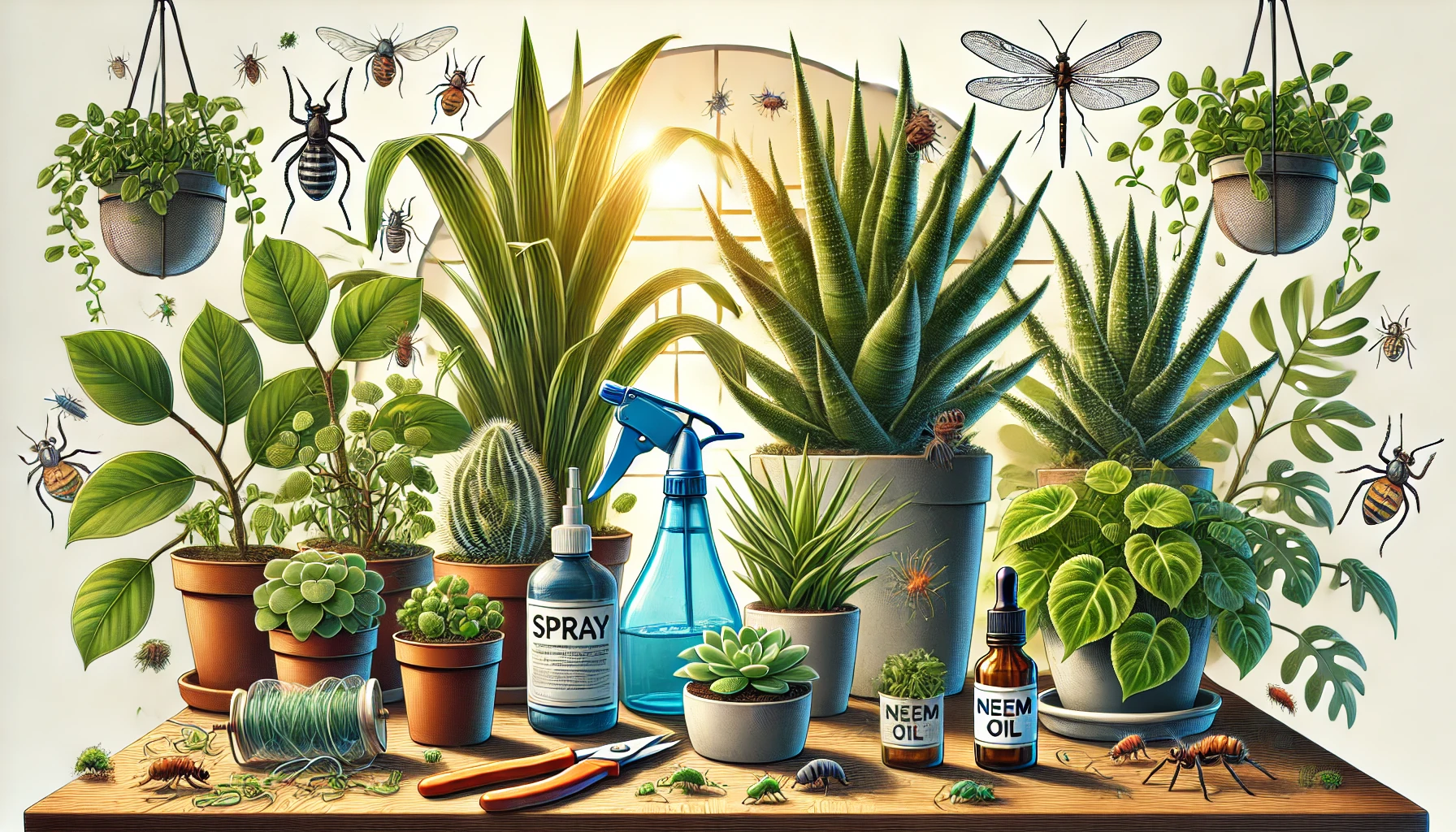Plant pests can cause significant damage to your greenery if left unchecked. From tiny aphids to sneaky spider mites, these invaders can weaken your plants, stunt their growth, and even lead to their demise. In this guide, you’ll learn how to identify common plant pests, prevent infestations, and treat affected plants effectively.
Common Plant Pests and How to Identify Them
Aphids
Aphids are small, soft-bodied insects that cluster on new growth and leaves. They feed on plant sap, leaving behind a sticky residue called honeydew, which can attract mold. Signs of aphid damage include yellowing leaves, curling, and stunted growth.
Spider Mites
Spider mites are nearly microscopic pests that thrive in dry conditions. They create fine webbing on leaves and stems, causing leaves to turn yellow or brown and eventually drop off.
Whiteflies
Whiteflies are tiny, moth-like insects found on the undersides of leaves. They feed on sap and can weaken plants over time. Signs include yellowing leaves and a visible cloud of insects when the plant is disturbed.
Mealybugs
Mealybugs appear as small, white, cottony masses on plants. They feed on plant sap and can cause leaves to wilt and turn yellow.
Scale Insects
Scale insects are small, round, and often appear as brown or white bumps on stems and leaves. They can weaken plants by sucking out sap, leading to yellowing and leaf drop.
Fungus Gnats
Fungus gnats are small flies that thrive in moist soil. While adults are harmless, their larvae feed on plant roots, causing stunted growth and wilting.
How to Prevent Pest Infestations
Inspect New Plants
Before bringing new plants into your home or garden, inspect them for signs of pests. Check leaves, stems, and soil carefully to avoid introducing infestations.
Maintain Plant Health
Healthy plants are more resistant to pests. Ensure your plants receive the right amount of light, water, and nutrients to keep them strong and less susceptible to attack.
Control Humidity and Airflow
Many pests, like spider mites and fungus gnats, thrive in stagnant air and overly moist conditions. Use a fan to improve airflow and avoid overwatering to reduce the risk of infestation.
Quarantine New Plants
Keep new plants separate from your existing collection for a couple of weeks to ensure they are pest-free before introducing them to your home or garden.
Clean Your Plants
Regularly wipe down leaves with a damp cloth to remove dust and deter pests. For outdoor plants, gently hose them down to wash away potential invaders.
Natural Pest Control Methods
Neem Oil
Neem oil is an effective natural pesticide that works against a variety of pests. Mix it with water and spray it on affected plants, focusing on the undersides of leaves.
Insecticidal Soap
Insecticidal soaps are safe for plants and effectively kill pests like aphids and whiteflies. Apply as directed, ensuring thorough coverage.
Homemade Remedies
Create a DIY spray using ingredients like dish soap, water, and a pinch of cayenne pepper to combat pests. This solution is particularly effective against soft-bodied insects like aphids and mealybugs.
Introduce Beneficial Insects
Ladybugs, lacewings, and predatory mites can naturally control pests by feeding on them. This method is especially useful for outdoor gardens.
How to Treat Infested Plants
Isolate Affected Plants
If you notice pests, immediately isolate the infested plant to prevent the problem from spreading to others.
Prune Affected Areas
Remove heavily infested leaves or stems and dispose of them in a sealed bag to avoid further contamination.
Apply Pest Control Products
Use the appropriate treatment for the type of pest. Follow instructions carefully and reapply as needed to ensure complete eradication.
Repot if Necessary
For pests like fungus gnats, repotting the plant in fresh, sterile soil can help eliminate larvae and eggs.
Regular Monitoring is Key
Check your plants frequently for early signs of pests. The sooner you spot an issue, the easier it is to address. Look for discoloration, webbing, sticky residue, or any unusual changes in your plants.
With these preventive measures and natural treatments, you can protect your plants from common pests and ensure they remain healthy and thriving. A little vigilance goes a long way in keeping your indoor jungle or outdoor garden pest-free.
